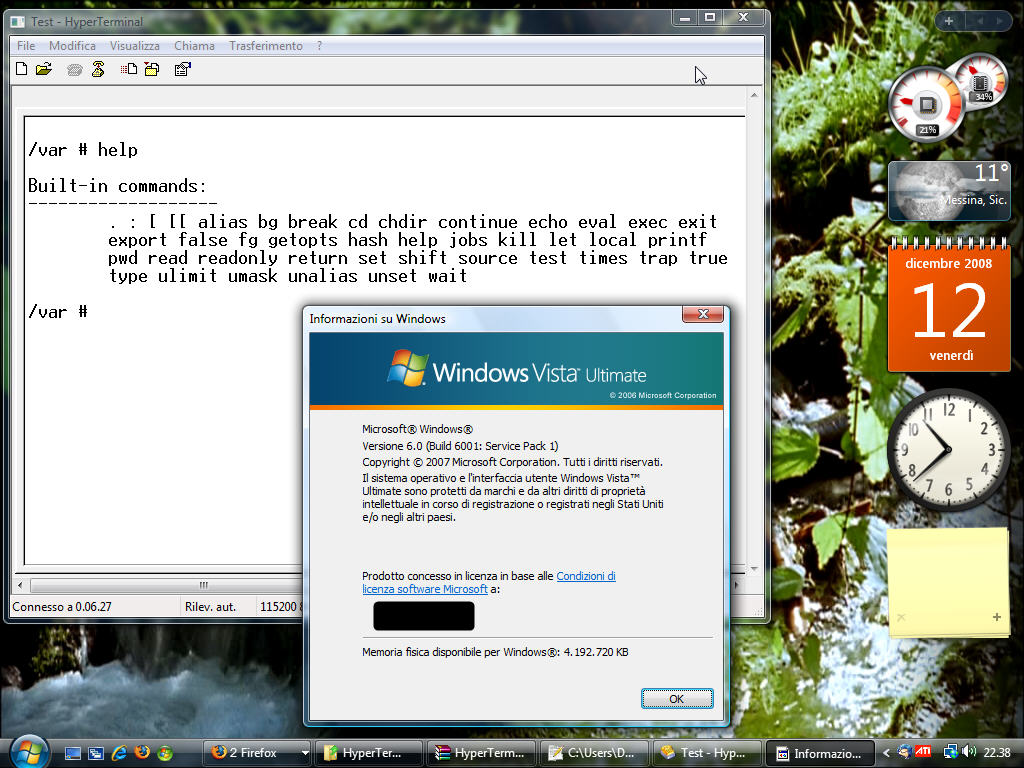HyperTerminal, a relic of the early computing era, played a pivotal role in shaping remote access and communication. This program, introduced by Microsoft in the 1990s, provided users with a way to connect to devices and systems through serial ports, opening up a world of possibilities for networking and data transfer.
Table of Contents
From configuring routers and modems to accessing remote servers, HyperTerminal became an essential tool for both tech enthusiasts and professionals. Its simple interface and straightforward functionality made it accessible to a wide range of users, even those unfamiliar with complex command-line interfaces.
Alternatives to HyperTerminal

HyperTerminal, a legacy terminal emulator, has served its purpose for many years, but its limitations and lack of modern features make it less suitable for contemporary use. Today, numerous powerful and versatile terminal emulators are available, offering a plethora of functionalities and enhancements for a more efficient and secure user experience.
Comparison of HyperTerminal with Modern Terminal Emulators
Modern terminal emulators offer significant advancements over HyperTerminal in terms of features, functionality, and security. This table highlights some key differences:
| Feature | HyperTerminal | Modern Terminal Emulators |
|---|---|---|
| User Interface | Basic, limited customization options | Modern, customizable interfaces with themes, color schemes, and layouts |
| Functionality | Limited to basic terminal operations | Advanced features like tab completion, command history, scripting, and remote access |
| Security | Limited security features | Enhanced security features like SSH support, encryption, and two-factor authentication |
| Platform Support | Windows only | Cross-platform support for Windows, macOS, Linux, and other operating systems |
Advantages of Using Modern Alternatives, Hyperterminal
Modern terminal emulators offer several advantages over HyperTerminal, including:
- Enhanced User Experience: Modern terminal emulators provide a more user-friendly and customizable interface, with features like tab completion, command history, and syntax highlighting, making it easier to navigate and manage commands.
- Advanced Functionality: Modern emulators offer a wider range of functionalities, such as scripting, remote access, and integration with other tools, enhancing productivity and efficiency.
- Improved Security: Modern emulators prioritize security with features like SSH support, encryption, and two-factor authentication, safeguarding sensitive data and connections.
- Cross-Platform Compatibility: Many modern emulators are available for multiple platforms, allowing users to access their preferred tools across different operating systems.
Disadvantages of Using Modern Alternatives
While modern terminal emulators offer significant advantages, there are some potential disadvantages:
- Learning Curve: Some modern emulators may have a steeper learning curve compared to HyperTerminal, requiring users to familiarize themselves with new features and functionalities.
- Resource Consumption: More feature-rich emulators may consume more system resources, especially on older or less powerful machines.
Popular and Recommended Terminal Emulators
Here is a list of popular and recommended terminal emulators for various platforms and use cases:
- Windows:
- ConEmu: A powerful and customizable terminal emulator that supports multiple tabs, splits, and plugins.
- Cmder: A portable terminal emulator that combines the power of Git for Windows and the flexibility of ConEmu.
- Windows Terminal: Microsoft’s official terminal emulator, offering a modern interface and support for various shells and profiles.
- macOS:
- iTerm2: A highly customizable terminal emulator with advanced features like split panes, tab management, and scripting support.
- Hyper: A cross-platform terminal emulator built with Electron, offering a modern interface and extensive customization options.
- Linux:
- GNOME Terminal: The default terminal emulator for GNOME desktops, offering a simple and intuitive interface.
- Xterm: A classic terminal emulator with a long history and support for various terminal emulators.
- Konsole: The default terminal emulator for KDE desktops, providing a customizable interface and advanced features.
Last Word: Hyperterminal

While HyperTerminal has been largely replaced by more modern and secure terminal emulators, its legacy continues to influence the way we interact with devices and networks today. The concepts of serial communication, remote access, and terminal emulation that HyperTerminal popularized remain fundamental to modern computing, serving as a testament to its enduring impact.
Hyperterminal, a legacy tool for connecting to serial devices, might seem outdated in today’s world. However, its simplicity can still be valuable for certain tasks, especially when working with hardware. If you’re a student looking for software to aid in your projects, consider exploring resources like student software platforms, which often offer a wide range of tools for various disciplines.
While hyperterminal may not be the most modern option, its basic functionality can be surprisingly helpful in specific scenarios.
